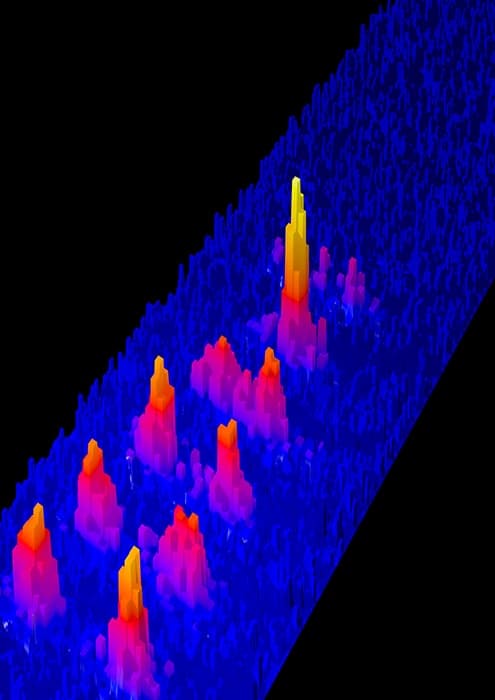
Colliding solitons made from Bose–Einstein condensates (BECs) can travel straight through each other and emerge almost unaltered. That is the result of experiments done by physicists in the US, Israel and Australia. Their research provides new insights into how matter waves interact with each other, and could further the development of new techniques in matter-wave interferometry.
Solitons are wave packets that can propagate long distances without breaking up or diminishing. They are best known in optics, but soliton solutions exist for a number of different wave equations. One important example is the 1D nonlinear Schrödinger equation, which can apply to light in nonlinear fibres as well as BECs confined to narrow tubes.
When true solitons collide, they pass straight through each other, keeping their shapes, amplitudes and velocities unchanged. Randy Hulet and colleagues at Rice University in Texas, together with researchers from Tel Aviv University in Israel and Swinburne University in Melbourne, examined whether this would apply to wave packets of matter called bright solitons in a BEC.
Divide and collide
A BEC comprises ultracold atoms all in the same quantum state, and therefore behaving as a single quantum object. In this latest work, the researchers create a BEC of lithium-7 atoms and shape it into a narrow tube using a cylindrically symmetric potential. The BEC is then divided in half using a laser beam, and both halves are further manipulated to form two solitons. Each soliton contains about 28,000 atoms and the pair are separated by about 26 μm.
The dividing laser beam is removed, allowing the two solitons to move towards each other. Crucially, when they meet, they usually pass straight through each other before re-emerging unaltered on the other side. Then the solitons oscillate back and forth in the tube, passing through each other repeatedly. It is neither experimentally feasible nor theoretically possible to determine how any two lithium atoms pass each other. This is because all of the atoms in a single soliton are represented by the same wave function, and are therefore in a superposition of all the possible trajectories through the tube. These paths include passing on top of each other, going around each other or even by tunnelling through each other.
Vanishing trick
Exactly what happens each time the two solitons collide depends on the phase difference between the two wave packets. For example, two solitons that meet when perfectly in phase will interfere constructively and momentarily, producing a denser clump of atoms. Conversely, when two perfectly out-of-phase solitons collide, the atoms momentarily vanish before reappearing again on either side of the collision point. Intermediate phase differences produce results between these two extremes.
While the researchers were unable to control or directly measure the relative phase of the soliton pairs used in the experiment – which was random – they were able to work backwards from their collision observations to understand the effect of a specific phase shift on a collision. First, they used theoretical models to simulate what a collision with a particular phase shift would look like. Then they ran the simulation multiple times, to calculate how the distribution of interactions should look if their calculations of the interactions resulting from each specific phase shift were correct, and compared it with the observed distribution from repeated runs of the experiment. They found generally good agreement between theory and experiment.
Collapse in 3D
However, unexpected things did happen occasionally. For example, the solitons sometimes fused together or collapsed completely when they collided. Such effects, which are not predicted by the 1D nonlinear Schrödinger equation, were far more common when the two solitons met in phase or nearly in phase, producing a high density region in the middle. Hulet explains that the larger and denser the clump becomes, the less well it is described by the 1D equation: “When the density peak is too high,” he says, “the density rises to such a level that it violates the 1D criterion and begins to sample the 3D space, and when it does that it collapses.” In future work, the researchers hope to control the phase difference between the two solitons and the number of particles in each soliton better, and thereby to determine more precisely where the 1D approximation becomes unstable.
Florian Schreck of the University of Amsterdam describes the work as “a clear textbook example, so it will be useful for teaching”. Schreck, who was not involved in the experiment, suggests that a practical application could be matter-wave interferometry – something that is also suggested by Hulet and colleagues. “Perhaps it will be useful to build an atom interferometer using solitons – wave packets that just don’t disperse,” he says.
The research is published in Nature Physics.



